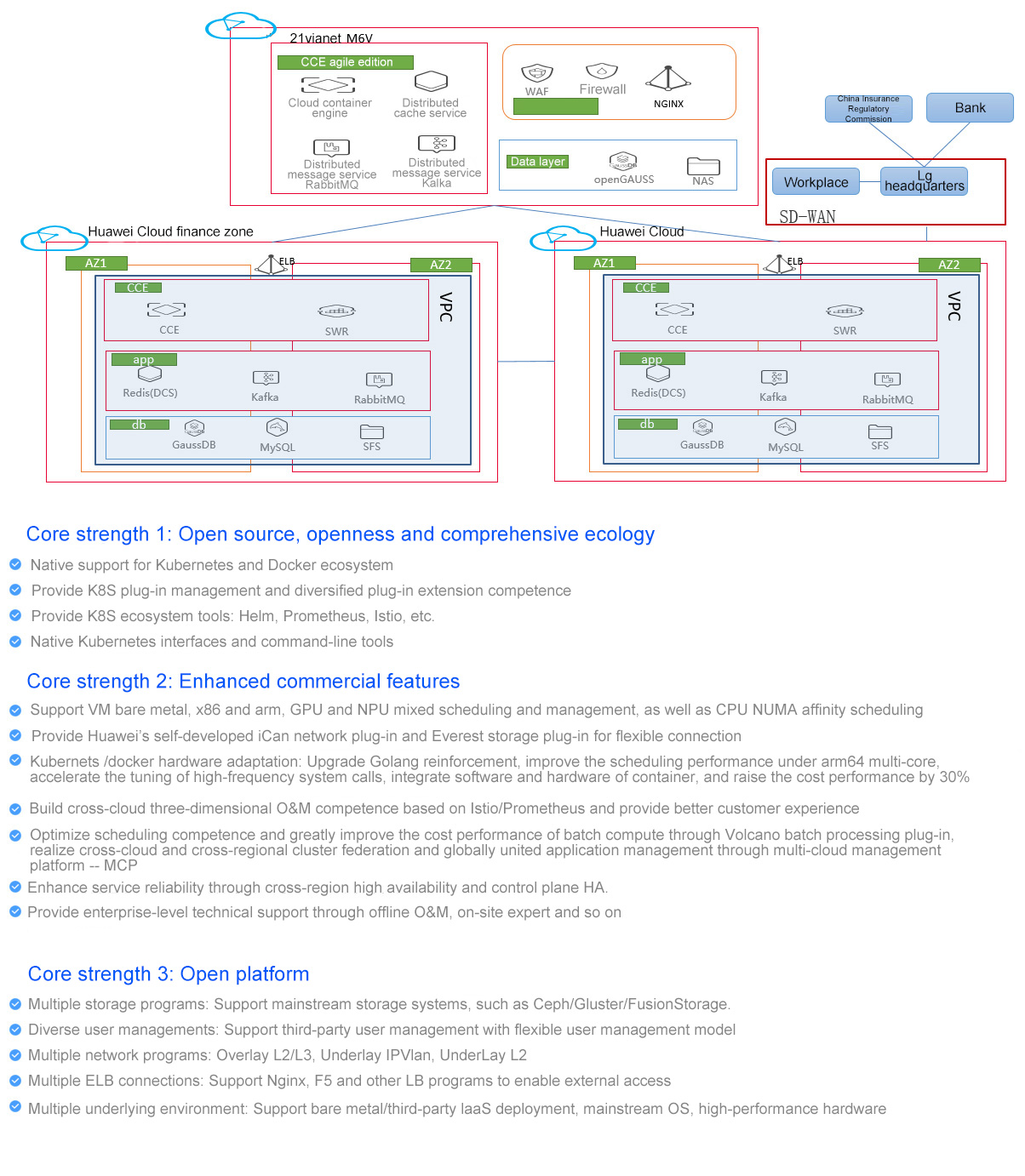-
Business Scenario
Due to the needs of business development, the offline and Alibaba Cloud businesses of the customer were relocated to Huawei Public Cloud from October to December 2021.
-
Business Challenge
• Based on various technical development frameworks and development tools, the front-end and back-end components are diverse.
• Due to frequent manual and offline operations in R&D process, the relevant efficiency needs to be improved.
• Due to the lack of enterprise-level API gateway competence, some advanced management, design, and marketing competence need to be improved.
• Because of the lack of a complete data governance system, the data application & development mode driven by business demand shall overcome its inefficiency.
• Currently, Rabbitmg, Redis, kafka and other components are used to build their own middleware competence, which need to be maintained and kept highly available. Since middleware versions and infrastructure resources are diverse, the resource utilization rate is low, the network partitions and security policies are numerous, and O&M are complex.
• The current container technology stack is discrete, the evolution of self-built versions is slow, and the united management competence across multiple clouds is scarce.
• Lack business/application/resource multi-level three-dimensional O&M system.
• Since more middleware must be maintained and high availability and performance must be guaranteed, more highly skilled manpower is required.
• Although the offline IDC security competence is relatively complete, there are complex security management problems caused by complex networks.
• Because public cloud’s security protection measures are rich, security reinforcement on the cloud must be further considered.
-
Solution

-
 Reduced O&M costSlash O&M cost with united management of multiple data centers and multiple k8s clusters.
Reduced O&M costSlash O&M cost with united management of multiple data centers and multiple k8s clusters. -
 Business continuityFlexibly Deploy applications to multiple data centers to cope with sudden traffics and automatically scale across clusters to meet business continuity monitoring demand.
Business continuityFlexibly Deploy applications to multiple data centers to cope with sudden traffics and automatically scale across clusters to meet business continuity monitoring demand. -
 Global traffic governanceTimely remove abnormal cluster traffics and provide reliable disaster recovery programs for financial institutions with cross-cluster traffic governance.
Global traffic governanceTimely remove abnormal cluster traffics and provide reliable disaster recovery programs for financial institutions with cross-cluster traffic governance. -
 ContainerOpsReduce the difficulty of application’s containerized transformation and delivery and launch/upgrade end-to-end distributed microservice core from hour to minute.
ContainerOpsReduce the difficulty of application’s containerized transformation and delivery and launch/upgrade end-to-end distributed microservice core from hour to minute. -
 Layered decouplingSupport heterogeneous laaS, virtualization, and hybrid deployment of legacy physical machines of the container platform base to protect the existing infrastructure investment of financial enterprises.
Layered decouplingSupport heterogeneous laaS, virtualization, and hybrid deployment of legacy physical machines of the container platform base to protect the existing infrastructure investment of financial enterprises.


 Jing Gong Wang An Bei No. 11010802037792
Jing Gong Wang An Bei No. 11010802037792